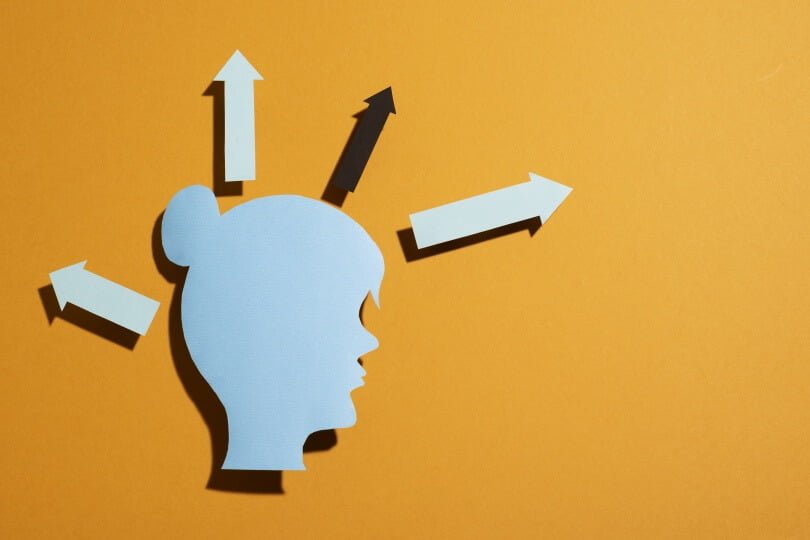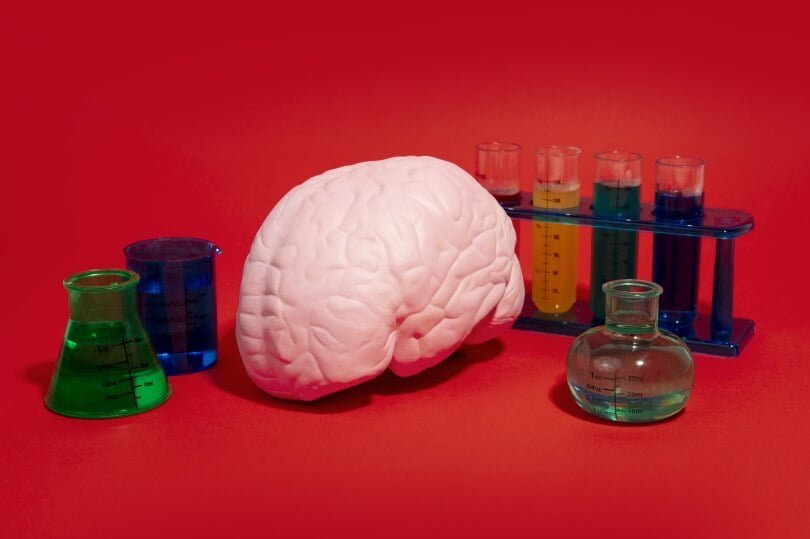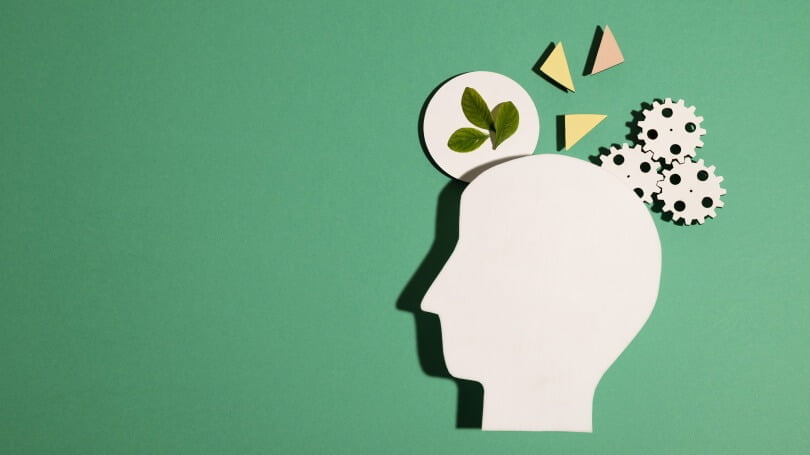Table of Contents
Understanding the Subconscious Mind

The Fundamentals of the Subconscious Mind
The human mind is a fascinating and complex entity, often described as an iceberg, with the conscious mind being the visible tip, while the vast, hidden segment beneath the water represents the subconscious. Understanding this hidden realm – the subconscious – is key to leveraging its power for subconscious healing, emotional healing, and even physical healing.
The subconscious mind is a repository for all memories, experiences, thoughts, and feelings that we aren’t acutely aware of but that influence our behavior and decisions. It operates beyond our conscious awareness and can be a powerful tool for personal growth when harnessed effectively.
- The subconscious mind processes information rapidly, allowing us to react instinctively in situations of danger.
- It stores habits and learned behaviors, which is why tasks like driving become second nature over time.
- The subconscious can influence emotions and physical states, such as stress or anxiety, often without our conscious realization.
How the Subconscious Mind Differs from the Conscious Mind
The conscious mind is responsible for our awareness in the present moment, encompassing thoughts, perceptions, and decision-making processes. Unlike the subconscious mind, it operates within our current awareness and is much narrower in focus. For example, while reading, your conscious mind is focused on comprehending the words and sentences, whereas your subconscious mind is managing your breathing and heart rate.
The subconscious, on the other hand, runs in the background. It is a vast database of experiences, accessible through various mind techniques. For instance, meditation can help access memories stored deep in the subconscious, aiding in emotional healing. The concept of harnessing this power is pivotal in areas like mental development and therapy.
- The subconscious mind can be programmed through repeated actions and thoughts, forming the basis for habit creation.
- It significantly influences our worldview and self-perception, often dictating our responses and reactions.
- Unlike the conscious mind, the subconscious integrates learned behaviors and memories without immediate scrutiny or questioning.
Role of the Subconscious in Daily Life: Practical Examples
The influence of the subconscious mind pervades virtually every aspect of daily life. Consider the act of driving a car: initially, the conscious mind actively processes each step, but with practice, these actions become second nature, managed by the subconscious. This transition illustrates the subconscious’s role in automating complex tasks.
In personal relationships, the subconscious may dictate our reactions based on past experiences. If someone has faced repeated betrayals, their subconscious might trigger distrust in new relationships, affecting their emotional well-being. Understanding this can aid in subconscious healing by reprogramming negative patterns.
- Athletes often use visualization techniques to prime their subconscious for successful performance, demonstrating the mind’s power over the body.
- Therapeutic interventions like hypnotherapy tap into the subconscious to address deep-rooted issues, promoting both emotional and physical healing.
- Creative problem-solving often occurs when the conscious mind is at rest, illustrating how the subconscious mind works tirelessly in the background.
The art of harnessing the power of the subconscious mind holds immense potential for enhancing various facets of life, from improving mental health to achieving personal success. By understanding and engaging with this hidden layer of the mind, one can unlock new realms of possibility and holistic well-being.
The Subconscious Mind’s Influence on Physical and Emotional Health
The connection between the subconscious mind and our physical and emotional health is a topic of immense scientific interest. The practice of subconscious healing involves tapping into the hidden depths of our mind to bring about emotional healing and physical healing, utilizing mind techniques that harness its immense power.
- Resilience against stress-related health issues.
- Improvement in emotional stability and well-being.
- Reduction of chronic pain and physical ailments.
Connection Between Mind and Body
The interrelationship between our mind and body is well-documented in scientific literature. One of the primary methods that the subconscious mind influences our physical state is through stress modulation. When we harness the power of mind techniques for subconscious healing, studies show that cortisol levels can significantly decrease, leading to improved physical health. For instance, individuals practicing meditation, a form of subconscious engagement, often report lower blood pressure and improved cardiovascular health. By cultivating a balanced mental state, the body naturally follows suit, manifesting in tangible improvements in physical well-being.
Case Studies Highlighting Physical Healing
Numerous case studies underscore the effectiveness of subconscious healing in physical healing. Consider the case of a patient recovering from chronic migraines who utilized guided visualization techniques. By visualizing a scenario where the pain gradually dissipated, the patient experienced a measurable decrease in migraine frequency and severity. Another study highlighted that individuals with chronic back pain who engaged in positive affirmations and mental imagery reported significant pain relief and better mobility. These real-life examples demonstrate the profound impact that targeted mental practices can have on physical health, affirming the mind-body connection.
Emotional healing and mental well-being are equally critical aspects influenced by the subconscious mind. Personal narratives often reveal the transformative power of addressing deep-seated emotional trauma through subconscious techniques. One prominent example is the use of hypnotherapy to uncover and reconcile buried emotions, promoting emotional healing. Clients frequently report not only improved emotional stability but also unexpected physical benefits like better sleep and reduced fatigue. By delving into the subconscious, individuals unlock pathways to holistic health, encompassing both emotional and physical dimensions.
In conclusion, the influence of the subconscious mind on physical and emotional health is profound and multi-faceted. Through targeted mind techniques, individuals can achieve remarkable improvements in their overall well-being, spanning both emotional healing and physical healing. These insights emphasize the critical need for ongoing research and application of subconscious healing practices in our daily lives.
Techniques for Harnessing the Power of the Subconscious for Healing

Proven Methods for Physical Healing
Understanding the dimensions of subconscious healing can significantly augment emotional healing and even extend to physical healing. By mastering various mind techniques and harnessing power from within, we can truly transform our lives. Here we delve into three proven methods for physical healing, each backed by scientific research and enriched with real-life examples.
Visualization and Imagery: Techniques and Success Stories
Visualization and imagery are pivotal techniques that can lead to substantial physical healing. Imagine a cancer patient visualizing their immune system attacking cancer cells. Consistent imagery practice has shown to improve treatment outcomes. This mental exercise isn’t just limited to severe ailments but can also aid in quicker healing of everyday injuries.
- Professional athletes often use visualization to accelerate recovery from injuries.
- Studies suggest that patients who visualize bacteria being eliminated recover quickly from infections.
- Many find that visualizing their bodies functioning perfectly leads to reduced pain and enhanced vitality.
Regular practice not only boosts morale but also sends positive signals to the body, allowing for accelerated healing. These techniques align closely with the principles of subconscious healing, where positive images replace negative thoughts, fostering a conducive environment for emotional healing as well.
Hypnotherapy: Process and Real-life Applications
Hypnotherapy has emerged as a noteworthy method for achieving subconscious healing. By reaching a deeply relaxed state, an individual can access their subconscious mind, making it easier to address underlying issues that impede physical healing. For instance, a person suffering from chronic pain can undergo hypnotherapy to address subconscious resistance to healing.
- People dealing with chronic stress can find substantial relief and improved physical health through hypnotherapy.
- Individuals with skin conditions have reported significant improvements following hypnotherapy sessions.
- Some have overcome addictions that impede physical health by tapping into their subconscious mind.
Hypnotherapy highlights the profound connection between mind techniques and physical well-being. Many have experienced transformational benefits, underscoring the potential of harnessing power from the subconscious for both emotional and physical healing.
Auto-suggestion and Affirmations: Practical Implementation
Auto-suggestion and affirmations are powerful tools in the field of subconscious healing. These techniques involve repeating positive statements that instill confidence and drive healing processes. For example, affirming “My body is healing every day” can redirect the subconscious to focus on recovery.
- People experiencing anxiety may find peace through regular practice of positive affirmations.
- Chronic pain sufferers often see improvement by focusing on affirmations that promote health and strength.
- Individuals seeking weight loss combine affirmations with healthy practices, leading to sustainable results.
By embedding these positive thoughts, the subconscious mind works towards turning them into reality. The practical implementation of auto-suggestion shows how mind techniques permeate daily life, aiding in significant physical healing.
In summary, visualization and imagery, hypnotherapy, and auto-suggestion provide a holistic approach to physical healing. By harnessing power from within, these methods facilitate a seamless connection between the mind and body, leading to profound emotional and physical healing.
Techniques for Emotional Healing Through Subconscious Mind Techniques
Emotional healing can be significantly advanced by unlocking the hidden powers of our subconscious mind. Whether you’re seeking emotional healing, physical healing, or exploring various mind techniques, delving into the subconscious can yield powerful results. Here, we will explore various techniques that can aid in harnessing this power, including Emotional Freedom Techniques (EFT), meditation, mindfulness, and cognitive behavioral approaches.
One key concept in subconscious healing revolves around addressing deeply rooted emotions that often impede our well-being. These strategies aim to replace negative thought patterns with positive ones, thus promoting both emotional and physical healing. Let’s dive into some effective methods.
- Emotional Freedom Techniques (EFT): This involves tapping on specific meridian points on the body to release emotional blockages.
- Meditation and Mindfulness: These practices allow for a deep connection with the present moment, helping to balance emotions and reduce stress.
- Cognitive Behavioral Approaches: These involve reprogramming the mind to develop healthier thought patterns through various practical exercises.
Emotional Freedom Techniques (EFT): Steps and Benefits
EFT combines the principles of acupuncture with psychology by tapping on specific meridian points. This approach can bring about significant emotional healing and is known for its simplicity and effectiveness.
- Identify the issue: Focus on a specific emotional problem.
- Rate the intensity: Assess the emotional intensity on a scale of 0-10.
- Tapping sequence: Tap on the meridian points while voicing a phrase that describes the issue.
With regular practice, EFT can lead to a noticeable reduction in emotional distress, making it a powerful tool for subconscious healing.
Meditation and Mindfulness: Practices for Emotional Balance
Meditation and mindfulness practices are another cornerstone of harnessing the power of the subconscious mind. These techniques can effectively promote both emotional and physical healing.
- Mindfulness Meditation: Focus on breathing and bodily sensations to anchor yourself in the present moment.
- Guided Imagery: Visualize positive and calming images to cultivate inner peace.
- Loving-Kindness Meditation: Extend feelings of compassion and love towards yourself and others.
These practices help in reducing stress, promoting emotional balance, and bringing a sense of peace – crucial aspects of emotional healing through subconscious mind techniques.
Cognitive Behavioral Approaches and Reprogramming: Practical Examples and Success Stories
Cognitive Behavioral Therapy (CBT) aims at reprogramming the mind to change negative thinking patterns. Examples of these mind techniques include cognitive restructuring and behavior activation.
- Journaling: Write down negative thoughts and challenge their validity.
- Thought Stopping: Interrupt negative thoughts with a distraction technique.
- Positive Affirmations: Repeat positive statements to counteract negative self-talk.
These methods have proven successful in numerous case studies, showing how cognitive behavioral approaches can bring about significant emotional healing. Incorporating these practices can offer tangible benefits, driving both emotional and physical well-being.
Emotional reactions and behaviors are often deeply embedded in the subconscious. By consciously applying these techniques, individuals can tap into the hidden powers of their subconscious for profound healing.
Summary
The human mind is a captivating and intricate entity often compared to an iceberg, with the conscious mind being the visible tip and the vast, hidden segment beneath the water representing the subconscious. Understanding this hidden realm – the subconscious – is key to leveraging its power for Healing Through Subconscious Mind Techniques, subconscious healing, emotional healing, and even physical healing.
The subconscious mind serves as a repository for all memories, experiences, thoughts, and feelings that we are not acutely aware of but significantly influence our behavior and decisions. It operates beyond our conscious awareness and can be a powerful tool for personal growth when harnessed effectively.
- The subconscious mind processes information rapidly, allowing us to react instinctively in situations of danger.
- It stores habits and learned behaviors, making tasks like driving second nature over time.
- The subconscious can influence emotions and physical states, such as stress or anxiety, often without our conscious realization.
How the Subconscious Mind Differs from the Conscious Mind
The conscious mind is responsible for our immediate awareness, handling thoughts, perceptions, and decision-making processes, whereas the subconscious operates in the background, storing a vast array of experiences. Techniques like meditation can access this hidden database, aiding in emotional healing. Harnessing the power of the subconscious mind is pivotal in areas like mental development and therapy.
- The subconscious mind can be programmed through repeated actions and thoughts, forming the basis for habit creation.
- It significantly influences our worldview and self-perception, often dictating our reactions and responses.
- Unlike the conscious mind, the subconscious integrates learned behaviors and memories without immediate scrutiny.
The influence of the subconscious mind pervades virtually every aspect of daily life. For instance, the act of driving a car initially involves the conscious mind actively processing each step, but with practice, the subconscious takes over, managing the complex task. In relationships, past experiences stored in the subconscious can trigger reactions like distrust in new relationships, impacting emotional well-being and necessitating subconscious healing to reprogram negative patterns.
- Athletes use visualization techniques to prime their subconscious for successful performance, demonstrating the mind’s power over the body.
- Therapeutic interventions like hypnotherapy tap into the subconscious to address deep-rooted issues, promoting both emotional healing and physical healing.
- Creative problem-solving often occurs when the conscious mind is at rest, illustrating the tireless work of the subconscious mind.
In conclusion, the subconscious mind’s influence on physical and emotional health is profound and multifaceted. Techniques such as visualization, hypnotherapy, and auto-suggestion can facilitate significant improvements in overall well-being, driving both emotional and physical healing. These insights underscore the importance of harnessing power from within to transform our lives.
FAQ – Healing Through Subconscious Mind Techniques
How can guided imagery be used to support emotional healing?
Guided imagery can facilitate emotional healing by helping individuals visualize calming and positive scenarios, which in turn can reduce stress and anxiety. This technique engages the subconscious mind, promoting a sense of peace and well-being by replacing negative thoughts with constructive mental images. Practical examples include imagining oneself in a serene natural setting or picturing successful outcomes in challenging situations.
Can visualization techniques improve physical and emotional healing through the power of the subconscious?
Visualization techniques can enhance both physical and emotional healing by tapping into the subconscious mind’s ability to influence bodily processes and mental states. When individuals visualize positive outcomes, the brain activates similar neural pathways to those used during actual experiences, potentially promoting healing responses and emotional resilience. This practice, supported by studies in neuroscience and psychology, can lead to measurable improvements in health and well-being, offering a powerful tool for holistic recovery.
How can visualization techniques be used to improve emotional well-being and physical health?
Visualization techniques can enhance emotional well-being by allowing individuals to mentally rehearse positive scenarios, thereby reducing stress and increasing feelings of happiness. For physical health, these techniques can aid in pain management and improvement in immune function by triggering the body’s relaxation response. Practical examples include athletes visualizing successful performances to improve their outcomes and patients visualizing healing processes to support their recovery.




